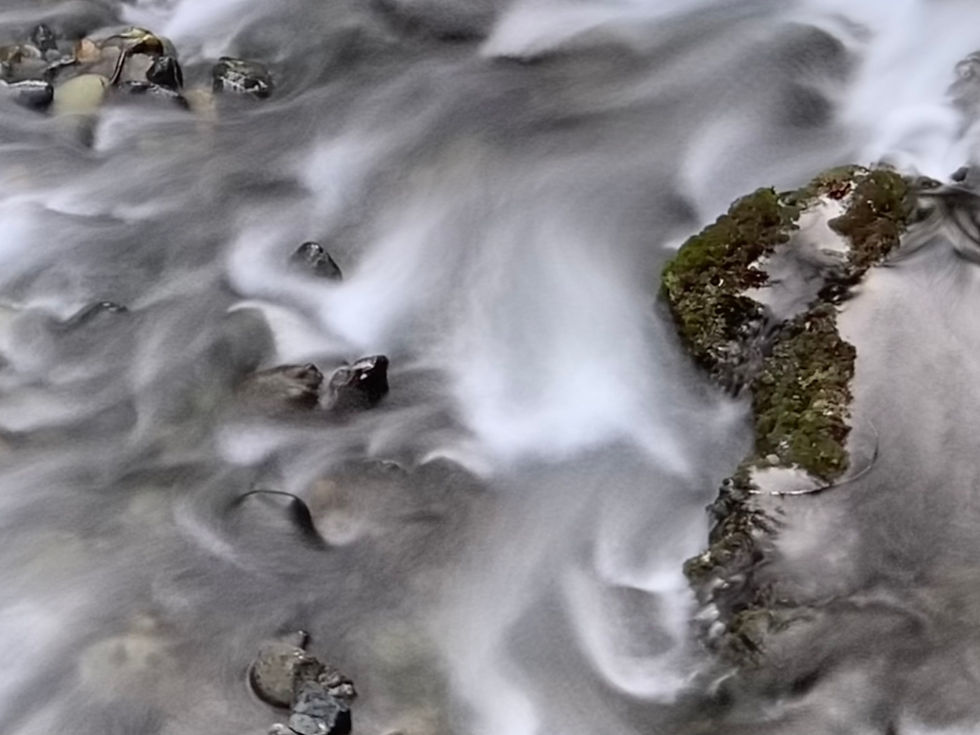Of Alcoves and Brightness Range
- Don Rommes
- Sep 14, 2021
- 3 min read
Updated: Jan 29, 2023
I didn't realize it at the time, but this photo closely resembles one I made many years earlier. This time though, I had a digital camera.

Alcove in Willow Canyon—a side canyon to the Escalante in Glen Canyon National Recreation Area. Despite the enormous brightness range, only one exposure was required to get this image. Photo: © Donald J. Rommes
This alcove was partially visible from the canyon below—a mouth-shaped shadow in the high, near-vertical, sunlight wall of Navajo sandstone. I wasn't sure there would be a good photo to be made in the alcove, but I decided to climb up to it (with my camera gear and tripod) to check it out.
The route up took me past a slippery pour off pool and up a sandy slope covered with scrub oak bushes. Before long, I was on slick rock and was able to traverse the slope to the mouth of the alcove.
As can be seen, the alcove was deep—perhaps 30-40 feet deep and 15-20 feet high. Th reflected light in the alcove's interior, as expected, was orange-red. A breast-shaped pile of stony rubble—fallen from the alcove ceiling—occupied the floor of the alcove. The periphery of the conical rubble pile was at floor level. That's where I walked to get behind the pile and look out of the alcove at the canyon walls beyond.
From that vantage point, no sky could be seen. Even so, the range of brightness—from the deep shadows in the back of the alcove to the brightly lit walls of sandstone in the distant background—was extreme,
I used a wide angle lens to frame the scene and I exposed for the brightest wall—making sure the bright values weren't clipped. The shadows fell where they did—still not completely black.
In the processed photo, I decreased the highlights, increased the shadows, and got a very nice image—a testament to the dynamic range of the modern digital sensor. I did bracket exposures while I was there—out of habit and as insurance against excess noise in the shadows. However, I didn't need to blend the exposures—the single image was fine for my purposes.

Deep alcove above the Escalante River—shot with a 4x5 camera and transparency film. Three sheets of film were exposed to properly record the enormous range of brightness values. Then, the film was digitized and each photo was taken into Photoshop where they were manually aligned, then blended into one exposure—"early HDR." Photo: © Donald J. Rommes
I showed the image above in a previous post. It was taken many years ago with a view camera, using transparency film. The alcove is in deep shade (too dark to read the aperture numbers from my lens) and looks out at canyon walls in full sunlight across the river. The brightness range of the scene (about 10 stops) greatly exceeded the five stop usable exposure range of the transparency film. Unlike with the modern digital camera, this photo could not have been made with a single exposure.
I exposed three sheets of transparency film for this scene—one for the shadows, one for the mid range values, and one for the highlights. Once the film was processed and scanned, I manually aligned the three images in Photoshop® and used masks to blend in the properly exposed areas of each image.
Today, of course, the process is simpler—I could make the photo with only one exposure and both alignment and exposure blending have been automated in Photoshop®. Not only that, but the weight of the modern digital camera is significantly lighter than a view camera kit. Both are welcome developments!




Comments